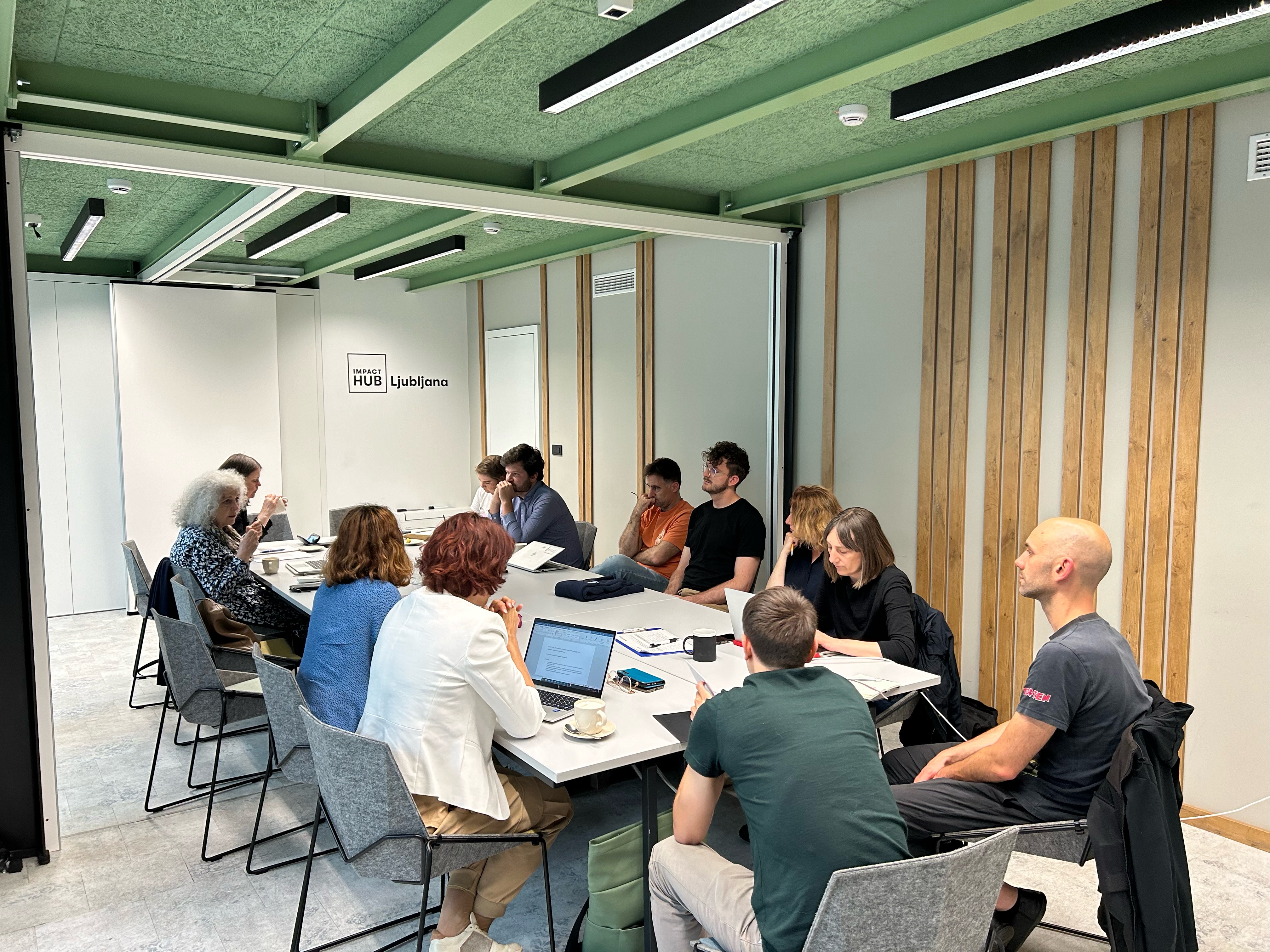The topic of wind energy in Slovenia was the focus of the second TogetherFor1.5 stakeholder meeting, organised by Focus, the Legal Center for the Protection of Human Rights and the Environment (PIC), and the Institute for Spatial Policies (IPOP).
The meeting included a presentation of the recent work of the organisers on this topic and preliminary findings of their ongoing study on the challenges regarding the uptake of wind energy in Slovenia. The presentation was followed by a discussion on the challenges related to wind energy uptake in Slovenia and ways of overcoming them. The discussion various stakeholder voices: representatives of the Ministry of the Environment, Climate and Energy, the Association of Municipalities and towns of Slovenia (SOS), and researchers from diffrent fields (Department of Landscape Architecture at the Biotechnical Faculty of Ljubljana, Innovation-research Institute of the University of Ljubljana and the Jožef Stefan Institute). The meeting thus also served as a consultation on the preliminary findings of the study with key stakeholders.

While the last two years have witnessed positive developments in the field of solar energy in Slovenia, Slovenia ranks second to last among European countries in the use of wind energy. The field has been largely characterized by poorly and inadequately conceived projects that were usually met with strong local resistance.
Focus, the Institute for Spatial Policy (IPOP) and the Legal Centre for Human Rights and Environmental Protection (PIC) are currently working on an analysis of the deployment of wind energy in Slovenia, which, in addition to identifying the key problems, also aims to contribute to improving future practices in this area through recommendations.
In the introductory part of the meeting, Dr Maja Simoneti (IPOP), Katja Huš (Focus) and Aljoša Petek (PIC) briefly presented their analysis and key findings, which mainly concern the experiences of local communities and municipalities, as well as the issues of public participation and the behaviour of investors in the permitting process.
Key preliminary findings of the study and discussion points:
- The deployment of wind energy has occurred without strategic direction,
- The local population feels that timely information is lacking.
- In the concrete project in the municipality of Pohorje, the municipality felt as though the state had abandoned them. Due to the size of the wind projects, the municipalities do not believe they are equipped to handle them independently.
- Municipalities’ experience with investors: investors manage multiple projects at once, which makes individuals and municipalities uneasy. The project is altered somewhat each time they interact with a municipality. At the same time, laws are always evolving. Municipalities believe that laws are shifting in favor of investors.
The presentation of the results was followed by a discussion in which, in addition to the above-mentioned issues, the participants touched upon other topical issues in the field – the experience with the implementation of the Act on the Deployment of Installations for the Production of Electricity from Renewable Energy Sources (ZUNPEOVE) and the process of developing an action programme for potential priority areas for RES/RE, etc.
Main points from the discussion:
- Municipalities feel that there is no strategy for wind energy.
- The distance of wind farms from settlements is undefined.
- Thematic action plan for potential priority areas for solar and wind in preparation – the purpose is for the State to review the areas and identify priority areas. In Slovenia no no-risk areas were identified, and very few low-risk areas.
- Spatial planning processes are complex. The processes are not well understood by the actors involved. ZUNPEOVE brings further changes.
- In the second work package of RES Slovenia (Facilitating RES deployment in electricity sector of Slovenia project), the wind potential was examined and compared with the protection regimes. For wind we have 17 TtWh of potential, of which there is very little potential in lower risk areas. Two protection regimes – human health – distance from settlements, and protected nature – Natura 2000 are the most important.
- What kind of investors do we want in Slovenia? The country has no clear protocols and guidelines for investors that would also attract socially responsible investors.
- Financial participation of the local community in wind energy projects should be encouraged.
PREVIOUS
NEXT
